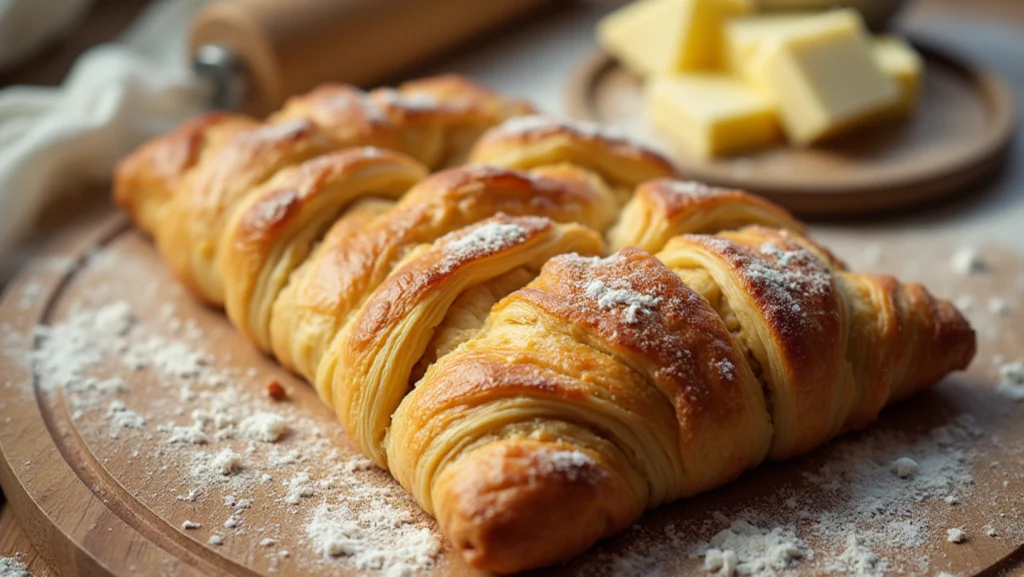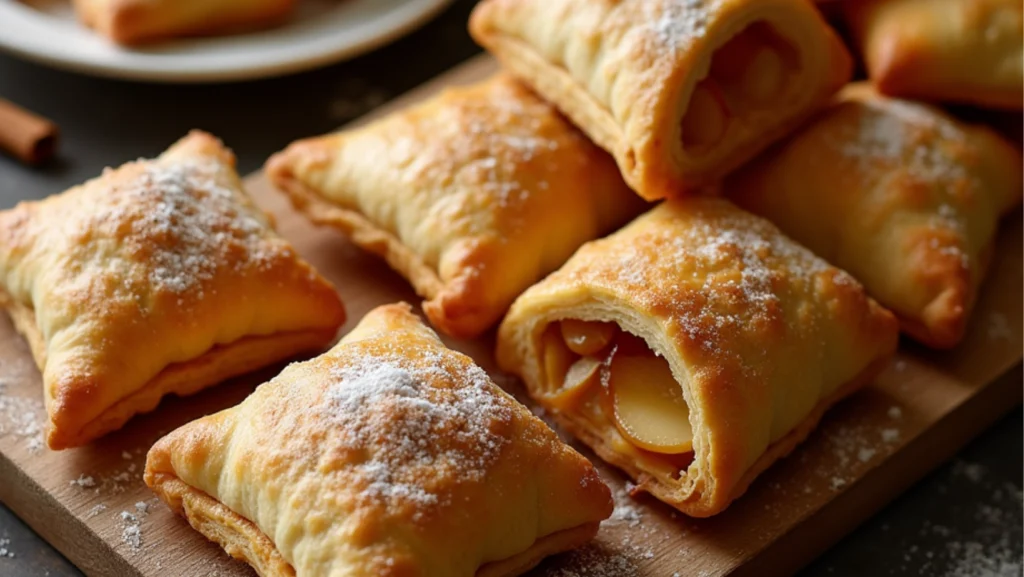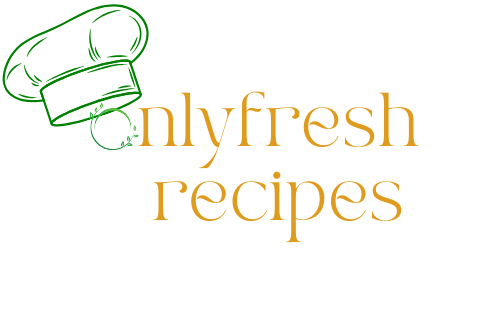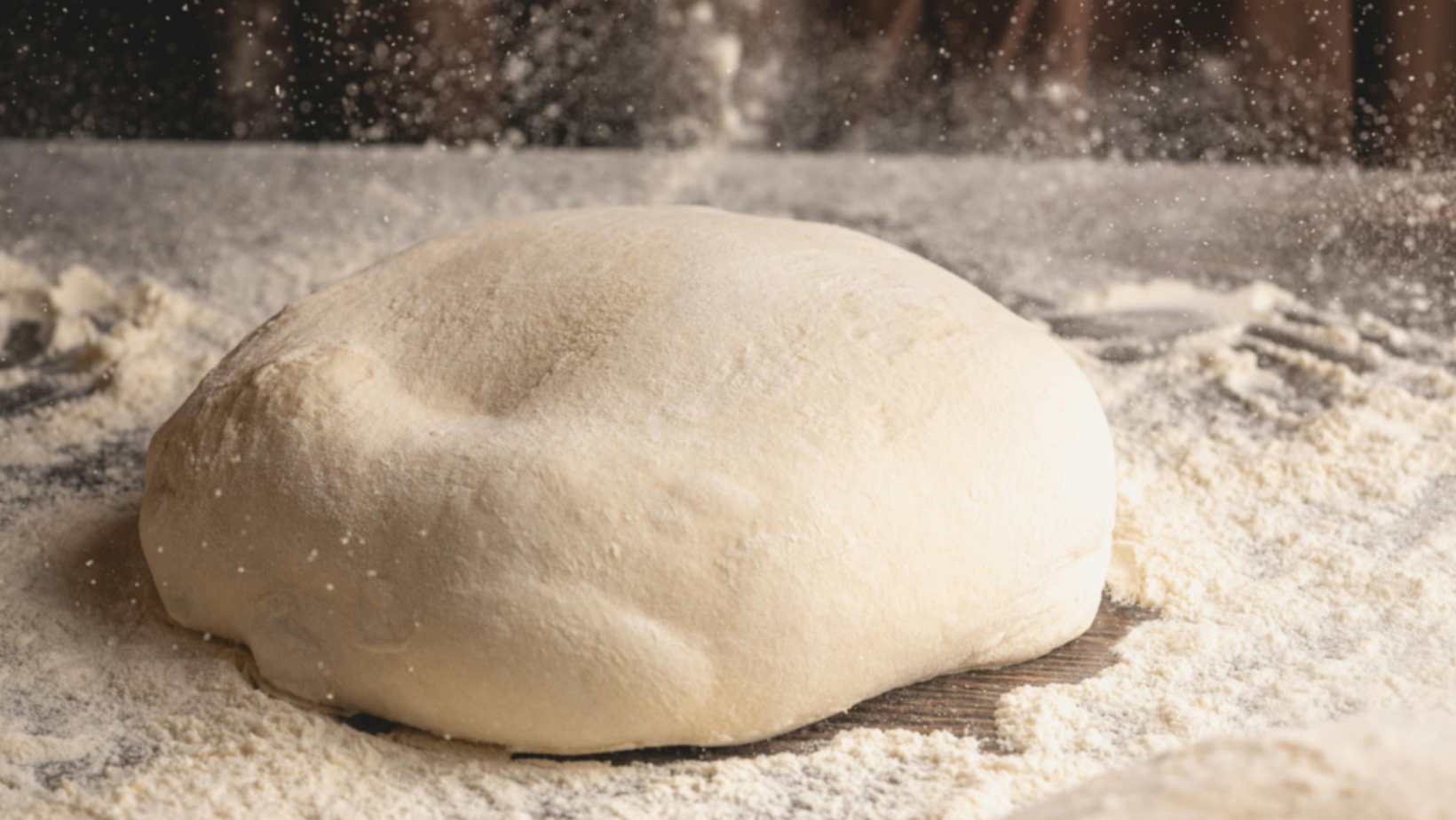Why Mastering Puff Pastry Matters
Puff pastry is one of those magical creations that transforms even the simplest ingredients into something extraordinary. Whether you’re making flaky croissants, golden pies, or elegant tarts, mastering puff pastry unlocks endless possibilities in your kitchen. Unlike store-bought options, homemade puff pastry offers unmatched freshness, texture, and flavor—plus, there’s the satisfaction of crafting something truly special from scratch.
Ready to learn the secrets to perfect puff pastry? Let’s dive in.
Essential Ingredients for Perfect Puff Pastry
The quality of your ingredients sets the foundation for flawless puff pastry. Here’s what you’ll need:
- High-Quality Butter: Opt for unsalted, European-style butter with a high-fat content. The fat is what creates the flaky layers.
- Flour Selection: All-purpose flour works well, but pastry flour can give a more tender result. Sift it for a smoother dough.
- Water and Salt: Use ice-cold water to keep the dough cool, and fine sea salt to enhance flavor.
- Optional Add-Ins: A splash of vinegar or lemon juice can help tenderize the dough, making it easier to work with.
By prioritizing high-quality ingredients, you’re already halfway to achieving bakery-level results.

Tools You’ll Need for Puff Pastry Perfection
To make puff pastry like a pro, having the right tools is essential:
- Rolling Pin: A sturdy, smooth rolling pin ensures even layers during lamination.
- Parchment Paper and Baking Sheets: These prevent sticking and promote even baking.
- Pastry Cutter or Bench Scraper: Ideal for cutting clean edges and handling dough gently.
- Cold Surfaces: A marble slab or chilled countertop can keep your dough cool while working.
Investing in these tools makes the process smoother and your results more consistent.
Step-by-Step Guide to Making Puff Pastry
Creating puff pastry may seem intimidating, but breaking it down into manageable steps makes it achievable for anyone.
1. Mixing the Dough
Combine flour, salt, and ice-cold water in a bowl. Mix until just combined—overmixing can result in tough pastry. Form the dough into a rectangle, wrap it in plastic, and chill for 30 minutes.
2. Laminating the Dough
Roll out the dough and place a slab of cold butter in the center. Fold the dough over the butter like an envelope and seal the edges. Roll it out gently, then fold it into thirds. This process is known as a “turn.” Repeat 4-6 times, chilling the dough for 30 minutes between each turn.
3. Chilling Between Folds
Resting the dough in the refrigerator is crucial. It keeps the butter solid and prevents the layers from merging. Aim for a total chill time of 2-3 hours.
4. Final Rolling and Cutting
Roll the dough to your desired thickness, keeping it even throughout. Use a sharp knife or cutter to avoid compressing the layers. The dough is now ready to bake or freeze for later use.
Tips and Tricks for Foolproof Puff Pastry
Even the most experienced bakers encounter challenges. Here are some tips to ensure success:
Maintaining Dough Temperature
Keep both your dough and butter as cold as possible to preserve distinct layers. Work quickly and chill the dough frequently.
Avoiding Common Mistakes
- Don’t overhandle the dough—it can activate gluten and make the pastry tough.
- Avoid rolling the dough too thin; this can cause the layers to collapse.
Baking Techniques
- Preheat your oven to a high temperature (375-400°F). The heat causes the layers to puff.
- Position your baking tray in the middle rack for even heat distribution.
Enhancing Flavor
Add herbs, cheese, or spices between the folds for a unique twist on classic puff pastry.
Creative Recipes to Try with Puff Pastry
Once you’ve mastered puff pastry, it’s time to unleash your creativity. Here are some ideas to inspire you:

Sweet Recipes
- Apple Turnovers: Sweet, spiced apple filling wrapped in golden pastry.
- Palmiers: Crunchy, caramelized cookies that are easy to make.
- Cream-Filled Pastries: Perfect for desserts or special occasions.
Savory Creations
- Cheese Twists: A simple yet impressive appetizer.
- Mini Quiches: Elegant and customizable for any gathering.
- Vegetable Tarts: Packed with seasonal produce and flavor.
Beginner-Friendly Recipes
- Puff pastry pinwheels with ham and cheese.
- Savory puff pastry pockets filled with spinach and feta.
- Easy puff pastry pizzas with your favorite toppings.
Frequently Asked Questions About Puff Pastry
1. What is the ideal temperature for baking puff pastry? A high temperature, around 375-400°F, ensures the layers puff and crisp properly.
2. Can I freeze homemade puff pastry dough? Yes! Wrap it tightly in plastic and freeze for up to 3 months. Thaw in the refrigerator before using.
3. How do I fix dough that’s too sticky or too dry? Add a sprinkle of flour if it’s sticky, or a teaspoon of cold water if it’s dry. Adjust gradually.
4. How many folds are needed for flaky puff pastry? Aim for 4-6 turns to create enough layers for a perfectly flaky texture.
Conclusion: Your Journey to Perfect Puff Pastry
Mastering puff pastry is a rewarding challenge that elevates your baking skills and expands your recipe repertoire. With the right ingredients, tools, and techniques, you can create buttery, flaky pastries that rival those from a professional bakery. Don’t be afraid to experiment with flavors and recipes—the possibilities are endless.
Now it’s your turn. Gather your ingredients, clear your workspace, and start folding your way to puff pastry perfection. Share your creations and tips in the comments below—we can’t wait to see what you’ll make!

